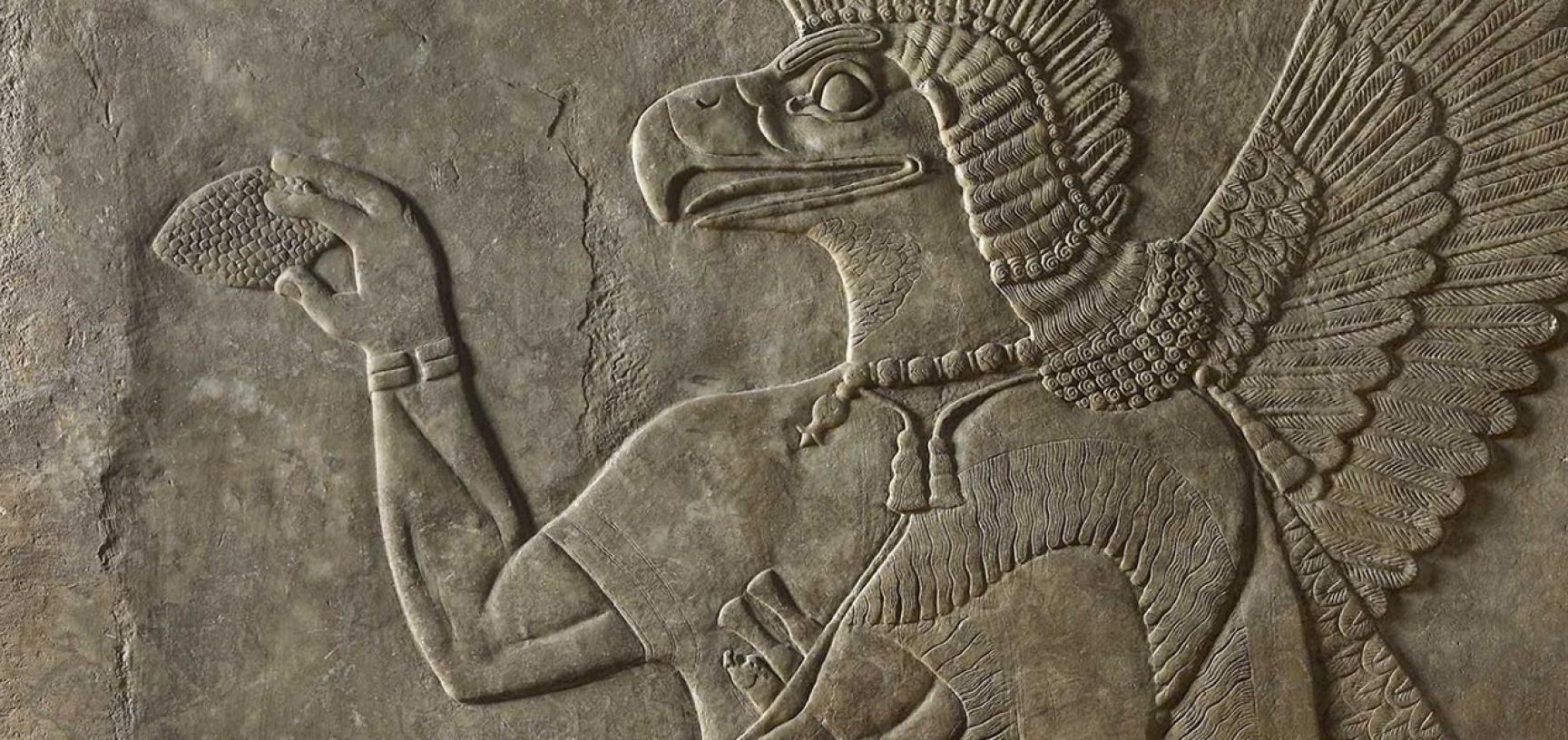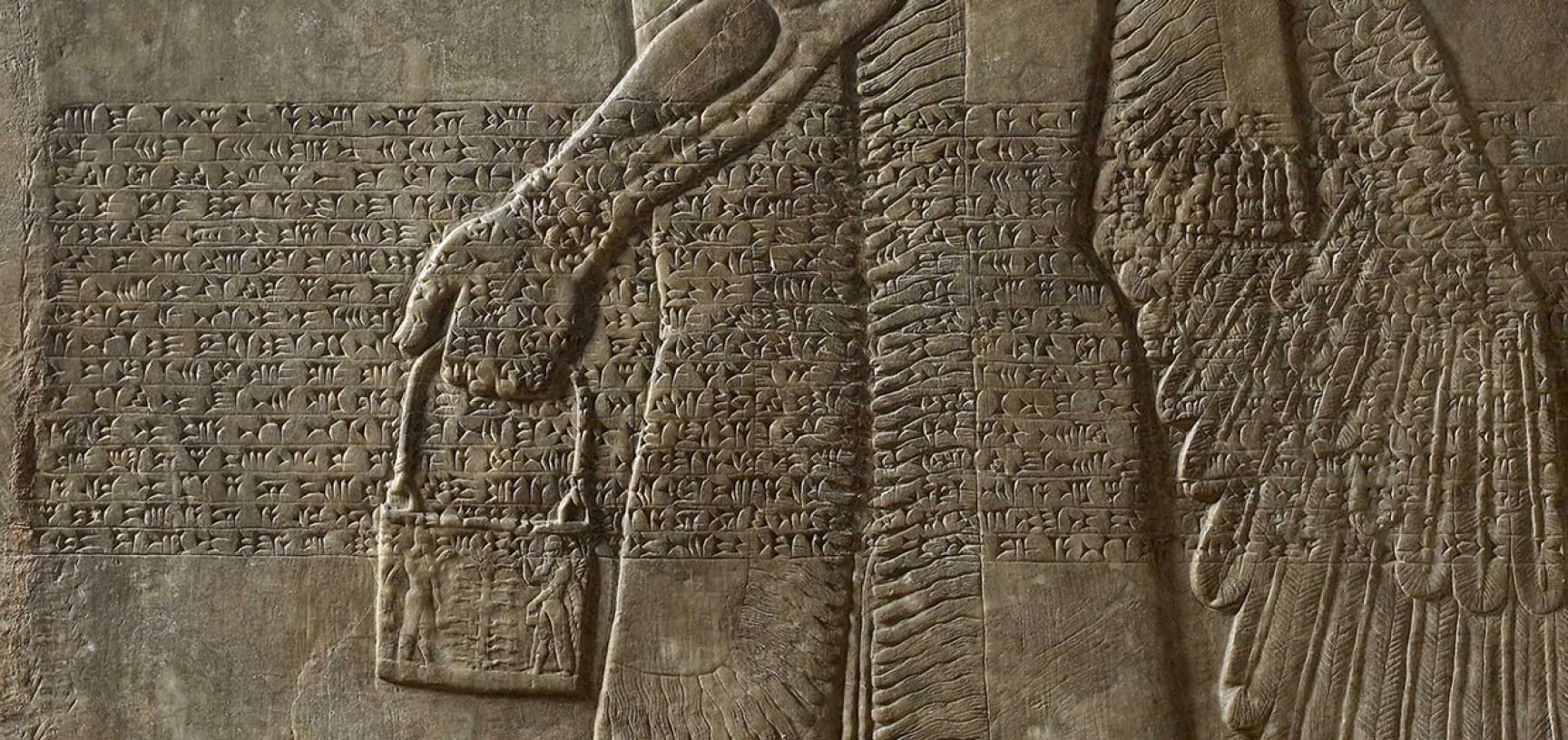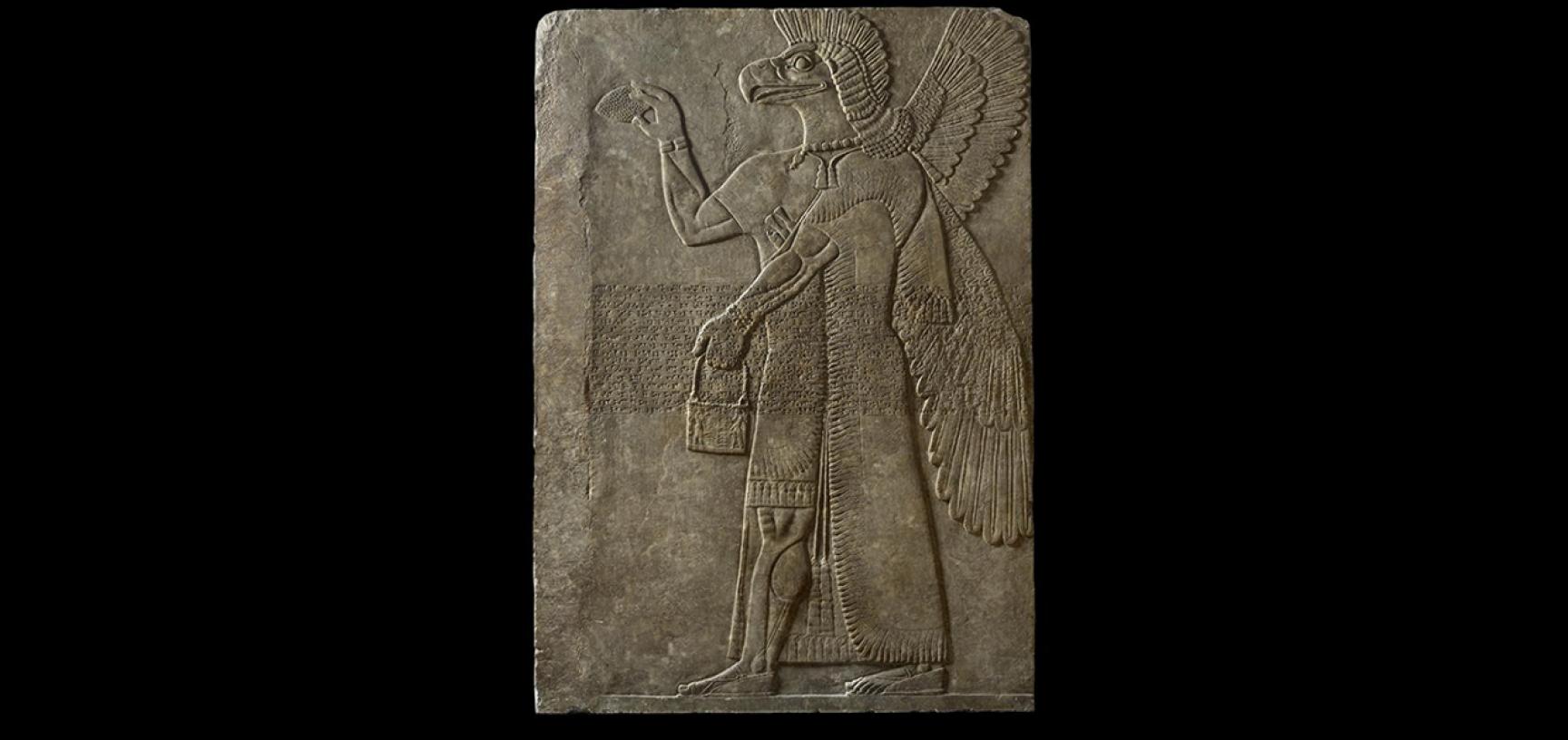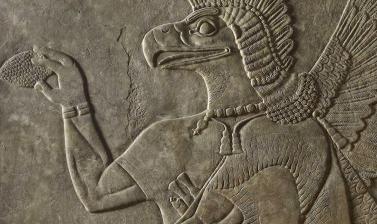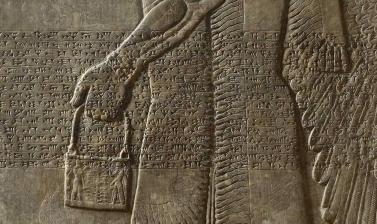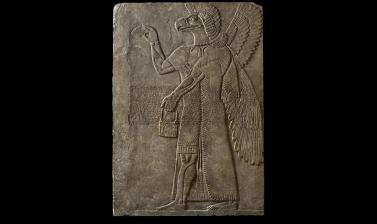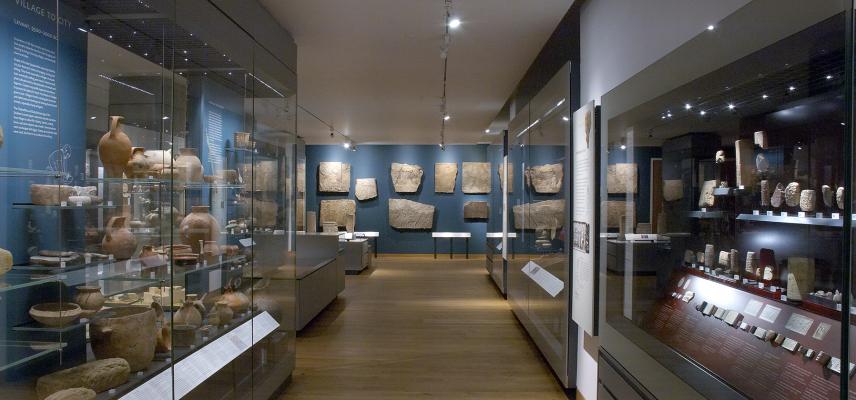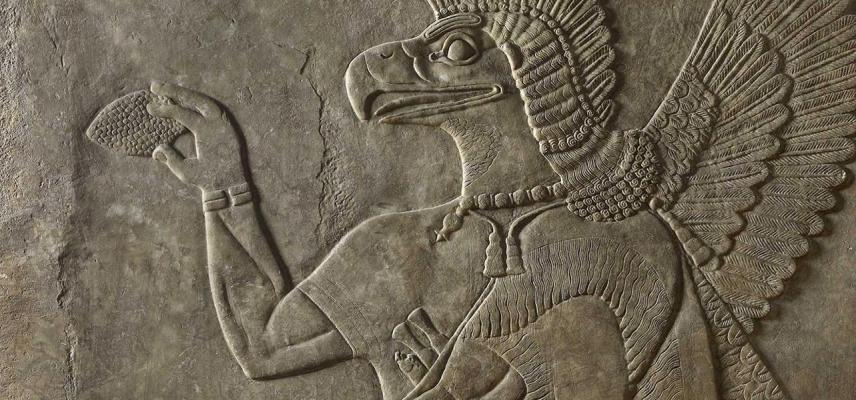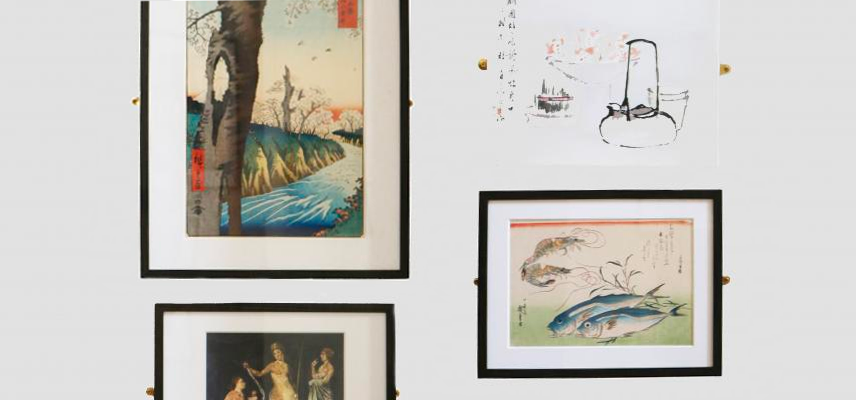PROTECTIVE SPIRIT
Protecting the king with a bucket of water
This carved slab is one of many such gypsum panels that lined the walls of important rooms in the so-called Northwest Palace at Nimrud, capital of Assyria, in what is now northern Iraq. Reliefs depicting supernatural spirits were erected at doorways and against the walls of ritually significant areas of the palace. This example was especially important as the imagery was designed to offer magical protection to the royal throne room. A cuneiform (wedge-like) inscription carved horizontally across the middle of the panel names the king responsible for its creation: Ashurnasirpal II (r. 883–859 BC)
Originally highlighted with paint, the bird-headed spirit wears fringed robes typical of male supernatural figures and holds a cone and a bucket. The cone is described in Assyrian texts as a purifier and was presumably used to sprinkle liquid from the bucket. The spirit is thus shown in the act of purifying the gateway he guards, helping to create a magical barrier that would keep out the forces of chaos.
The palace at Nimrud was excavated by the British adventurer Austen Henry Layard between 1845 and 1851. In gratitude for the award of an honorary degree in 1848, Layard offered this relief to the University of Oxford. In April 1850 the carved slab was placed in a crate and sent down the River Tigris on a raft to Basra and from there transferred to Bombay (Mumbai). Months later, the slab was sailed around Africa to London and eventually reached Oxford in January 1852.
Protective Spirit
Nimrud, Iraq
c. 870 BC
Gypsum
232 x 157.5 cm
Layard excavations
View on our online Collection Online Site: AN1982.224
License this image - visit the Ashmolean Image Library


